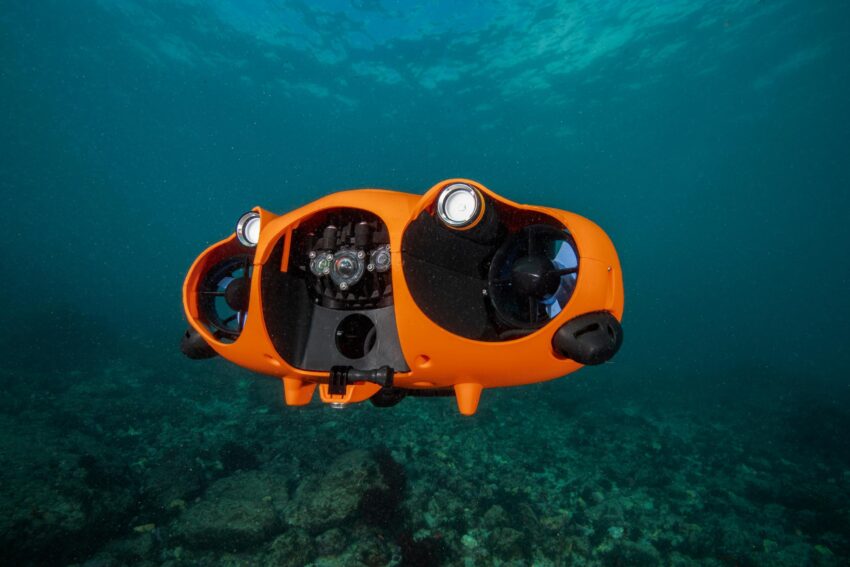Introduction to the PIKE Series
Latvian startup SUBmerge Baltic made a significant splash at Drone Summit 2025 in Riga by unveiling its latest PIKE series of underwater drones. This innovative lineup highlights the company’s ongoing efforts in drone technology development, particularly in marine environments.
The flagship model, the PIKE 1, is a remotely operated vehicle characterized by its impressive operational endurance. With an ‘8-hour work time’ and a range of 80 kilometers (49 miles), the PIKE 1 can dive to remarkable depths of up to 300 meters (984 feet), making it a versatile tool for various underwater tasks.
PIKE 1 Features and Capabilities
Equipped with dual cameras—one facing forward and another directed downward—the PIKE 1 also utilizes a Doppler Velocity Logger (DVL) alongside a state-of-the-art 360-degree sonar system, enhancing its navigational precision in challenging underwater conditions.
This model is specifically designed for applications that require meticulous monitoring and mapping of underwater environments, showcasing high adaptability for a variety of maritime operations.
Advancements with the PIKE AUV
The PIKE series also includes an autonomous underwater vehicle (AUV), which significantly surpasses the capabilities of the PIKE 1. Capable of traveling up to 150 kilometers (93 miles) and diving to depths of 500 meters (1,640 feet), the AUV is built to handle more demanding underwater missions.
Incorporating advanced technology such as inertial navigation systems and global navigation satellite systems, this AUV ensures precise long-term navigation, demonstrating the potential for versatile applications in both civilian and defense scenarios.
Strategic Applications in Surveillance
The PIKE drones are particularly suited for tasks like border surveillance and the protection of underwater infrastructure, essential in the often murky waters of Latvia and the broader Baltic region. With high-resolution cameras and sophisticated sensors, they track vital parameters including position, movement, and depth, solidifying their role in maritime security.
Their design not only addresses current security challenges but also offers solutions for monitoring aquatic ecosystems, highlighting the multifaceted utility of SUBmerge Baltic’s technological innovations.
Evolving Development Goals
Initially conceived for civilian applications, such as search and reconnaissance missions, the development of these drones has progressively pivoted towards defense capabilities. This shift includes ambitious projects to produce kamikaze drones and surface vehicles able to target deep positions in areas occupied by Russian forces.
The team at SUBmerge Baltic is actively conducting local tests, with plans for joint trials with the Latvian Navy slated for June and July. They also intend to engage in further testing in Ukraine by September, showcasing their commitment to practical applications of their technologies.
Cost-Reduction Initiatives
In an effort to make these advanced underwater drones more accessible, SUBmerge Baltic is focusing on reducing production costs. The aim is to lower the unit price from the current 100,000 euros ($112,000) to approximately 75,000 euros ($84,000), enhancing market viability.
To meet potential demand, the company plans to ramp up production from five to as many as 20 drones per month, with aspirations to deliver two units to the Latvian Ministry of the Interior by 2025, demonstrating their commitment to expanding the presence of PIKE drones in practical scenarios.







